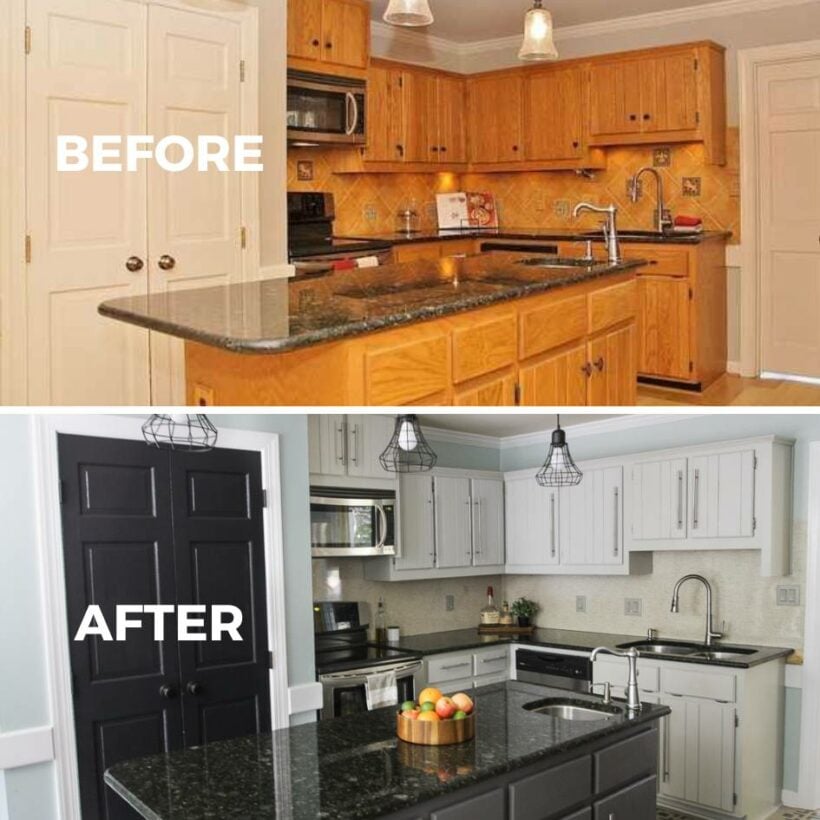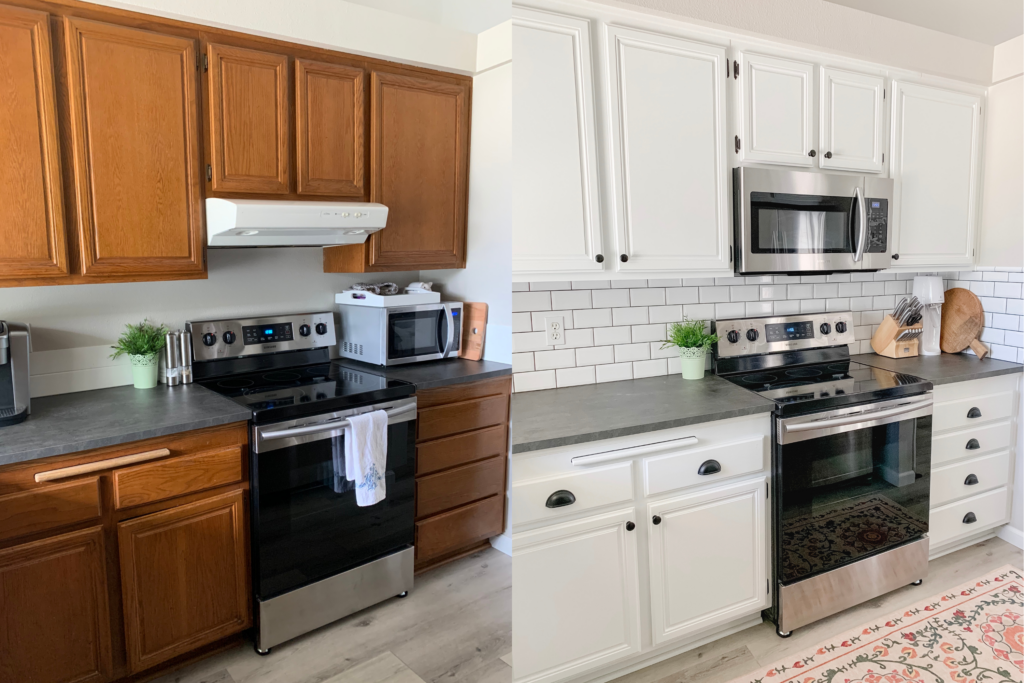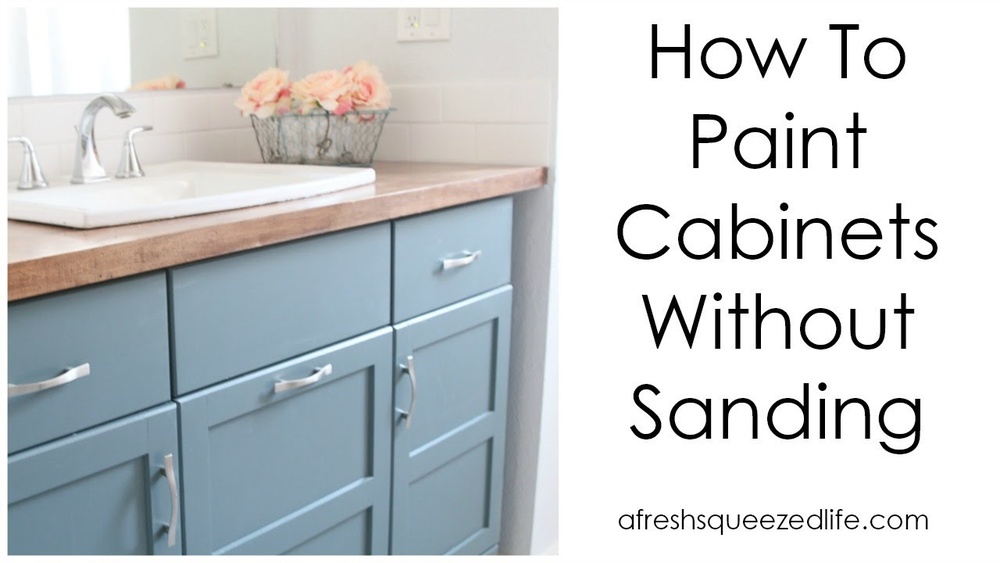Are you ready to give your kitchen a fresh new look but dread the messy, time-consuming task of sanding your cabinets? What if you could skip that step entirely and still achieve a smooth, professional finish?
Painting kitchen cabinets without sanding is not only possible—it’s easier than you think. By using the right cleaning methods, a liquid deglosser, and a strong bonding primer, you can transform your cabinets quickly and with less hassle. Keep reading, and you’ll discover simple, effective steps to update your kitchen cabinets without dust clouds or hours of prep work.
Your dream kitchen makeover starts here!

Preparation Steps
Start by cleaning the cabinets thoroughly. Remove all grease, dirt, and food residues using a strong cleaner or degreaser. This step is essential to help paint stick well.
Next, apply a liquid deglosser. This product removes the shiny layer on cabinet surfaces without sanding. It helps the primer and paint adhere better. Follow the instructions on the deglosser carefully for best results.
Choose the right primer for your cabinets. A high-quality bonding primer designed for glossy or slick surfaces works best. It creates a strong base and prevents paint from peeling or chipping.
Painting Process
Select Suitable Paint: Choose a paint made for kitchen cabinets. Use a paint that sticks well without sanding. Acrylic latex or oil-based paints work best. These paints give a smooth, durable finish that lasts.
Apply Paint Smoothly: Clean cabinet surfaces first. Use a good primer to help paint stick better. Apply paint in thin, even coats. Let each coat dry fully before the next. This avoids drips and rough spots.
Use Roller or Sprayer: A foam roller works well for flat areas. It gives a smooth finish without brush marks. For detailed parts, a small brush helps. A paint sprayer can cover cabinets quickly and evenly. Use light, steady strokes to avoid runs.
Materials Needed
For degreasing cleaners, options include trisodium phosphate (TSP), vinegar mixed with water, or commercial kitchen degreasers. These remove grease and dirt well.
Choosing the right primer is key. Use bonding primers designed for slick surfaces. Oil-based or shellac primers work best to help paint stick without sanding.
| Paint Type | Best For | Notes |
|---|---|---|
| Latex Paint | Easy cleaning and low odor | Use a primer first for good adhesion |
| Chalk Paint | Matte, vintage look | May need a topcoat for durability |
| Oil-Based Paint | Durable, smooth finish | Longer drying time and stronger smell |

Tips For Best Results
Start by checking the cabinet surface for dirt, grease, or peeling paint. Clean it well with a degreaser or soap and water. This helps the paint stick better. Use a liquid deglosser if the surface is shiny. It creates a rough texture without sanding.
Apply a high-quality bonding primer. This step is important to stop peeling and make paint last longer. Use a brush or roller for even coverage. Avoid thick layers; thin coats dry faster and smoother.
Let the primer dry fully. Follow the manufacturer’s drying time instructions. Proper drying ensures better paint adhesion and a smooth finish. Rushing this step can cause peeling and bubbles.
Common Mistakes To Avoid
Skipping the cleaning step is a common mistake. Dirt and grease stop paint from sticking well. Always use a strong cleaner and a cloth to remove all grime before painting.
Using incompatible products causes problems. Not all primers or paints work on glossy surfaces without sanding. Choose products made for no-sanding projects to avoid peeling or bubbling.
Ignoring surface imperfections leads to poor results. Fill holes and scratches with wood filler. Smooth the surface with a fine abrasive pad. This helps paint look even and last longer.

Pros And Cons
Time savings is a major benefit of painting cabinets without sanding. It cuts prep work and speeds up the project. Using a liquid deglosser replaces sanding and still helps paint stick well. This method is less dusty and less messy, making cleanup easier.
Durability can be a concern. Paint may not stick as long without sanding if the surface is very smooth or glossy. A high-quality bonding primer is needed to help paint last and avoid peeling. Cabinets with old, chipped paint might need more prep for good results.
Sanding might be necessary when cabinets have a thick finish, glossy surfaces, or damage. It helps create a rough surface for paint to hold onto better. Skipping sanding on these surfaces could cause paint to peel sooner or look uneven.
Alternative Methods
Paint sprayers offer a smooth, even coat quickly. They help reach tight corners easily. Using a sprayer reduces brush marks, making cabinets look professional. Always cover nearby surfaces to avoid overspray.
Specialty paints for cabinets stick well without sanding. Look for paints labeled “bonding” or “adhesion.” These paints often include a primer, saving time. They resist chipping and wear better than regular paint.
Hiring professionals ensures a flawless finish without sanding. Experts use proper primers and high-quality paints. They prepare surfaces with deglossers or liquid sandpaper. This method saves effort and guarantees long-lasting results.
Frequently Asked Questions
Can You Paint Over Cabinets Without Sanding?
Yes, you can paint cabinets without sanding by cleaning thoroughly, using a liquid deglosser, and applying a strong bonding primer. This ensures good paint adhesion and durability.
Can I Just Paint Over My Kitchen Cabinets?
Yes, you can paint over kitchen cabinets without sanding by cleaning, using a liquid deglosser, and applying a strong bonding primer for better adhesion.
Is It Better To Brush Or Roll Paint On Kitchen Cabinets?
Rolling paint on kitchen cabinets offers a smooth, even finish and speeds up coverage. Brushing works better for edges and detailed areas. Combining both ensures professional results and durability.
What Is The Easiest Way To Paint Kitchen Cabinets?
The easiest way to paint kitchen cabinets is to clean thoroughly, apply liquid deglosser, use a strong bonding primer, then paint. This method skips sanding but ensures good paint adhesion and durability.
Conclusion
Painting kitchen cabinets without sanding saves time and effort. Clean cabinets well to remove grease and dirt first. Apply liquid deglosser to dull shiny surfaces for better paint grip. Use a quality bonding primer to ensure paint sticks and lasts longer.
Choose the right paint and tools for a smooth finish. Following these simple steps helps refresh your kitchen cabinets easily. Enjoy a fresh look without the mess of sanding. This method works well for most kitchen cabinet materials. Try it yourself and see the difference it makes!

